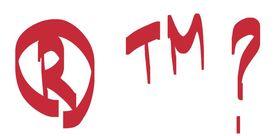Basic information about EU trademarks. What are the countries? What are the benefits and downsides of EU trademarks. Find out here.
Insights
How to do a trademark search yourself?
Making a trademark search is a good way to reduce the likelihood of encountering problems with the trademark later on. We recommend that you use a professional to do that, but if you want to do it yourself, here’s how to get started.
Want an EU trademark really quickly? Do a “fast track” application!
It is possible to have you trademark application preliminarily approved in the EU in just a couple of days. Read more to find out how.
How is your trademark application examined?
We know from experience that it is often not clear to companies what happens after they have submitted their trademark application. Read here to find out what happens after you have submitted your application.
How to make and use the ® and ™ symbols
There are many ways to make the ® and ™ symbols with your keyboard. Here are some of them. See also how to use these symbols correctly.
What is trademark’s “distinctiveness” what why it matters?
Product or service name must be “distinctive” in order to be protectable as a trademark. So what does this mean in practice?
Next time you’re accused of trademark infringement, try this!
Trademark litigation can be expensive, and often the biggest winners are the lawyers. Southwest Airlines and Stevens Aviations showed that sometimes there is a better way.
Common classification mistake that many software companies make
Many companies who offer software products and services make a fundamental mistake in identifying those goods and services in their trademark application. With this simple rule you can do better than many other companies.
Differences between direct EU trademark and international trademark “designating” EU
There are two ways of getting a European wide trademark. Applying it directly at European Intellectual Property Office (EUIPO) or making an application for international trademark registration that covers also the European Union. If accepted, the registration covers all EU member states.
There are however some important differences depending which route you take.








